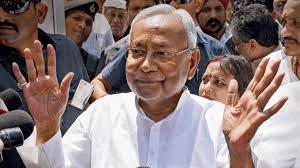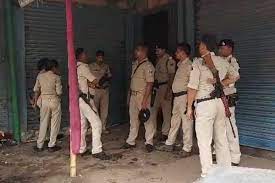According to a Bihar Caste Survey, 34.13% of families earn less than Rs 6,000 a month. CM Nitish calls for an increase in the quota
The comprehensive report of the Bihar Caste Survey, which was submitted to the state parliament on Tuesday, states that one-third of households in the state earn less than Rs 6,000 per month.
According to a study presented by Minister of Parliamentary Affairs Vijay Kumar Chaudhary, there were around 2.97 crore households in the state, and 34.13 percent of them lived in poverty with monthly incomes of Rs 6,000 or less. Of them, over 94 lakhs were impoverished.
Significant poverty was also reported among the upper castes, while the proportion of the destitute was noticeably larger among the backward classes, Dalits, and tribal people.
Following these discoveries, Chief Minister Nitish Kumar has advocated for raising the quota for OBCs (other backward groups) like as Dalits and tribal people. During a state assembly discussion on Tuesday, Nitish expressed his belief that the quota for OBCs should be increased from 50 to 65 percent, and the quota for SCs and STs, who together make up 17 percent of the population, should be raised to 22 percent, according to PTI.
“After the appropriate discussions, we will take the necessary action. We want to implement these reforms within this session,” Nitish said, according to PTI.
The fact that over 50 lakh Biharis were residing outside of the state in quest of employment or better educational possibilities was another significant discovery. About 46 lakh people made their life in other states, while an additional 2.17 lakh left for better opportunities overseas. There were over 5.52 lakh people studying in other states, and there were approximately 27,000 studying overseas.
On October 2, the caste survey’s first results were made public. The Center’s unwillingness to conduct a caste census prompted the Nitish Kumar administration to initiate the exercise.
According to the first results, over 60% of the state’s population was made up of OBCs and Extremely Backward Classes (EBCs), with the higher castes making up the remaining 10%.
The information presented to the legislature showed that the higher castes had a marked higher than 25% poverty rate. The very small number of Kayasthas represented the wealthiest upper caste in Hinduism. Out of the mostly urbanized society, just 13.83 per cent of households were impoverished. The Bhumihars, who were thought to be the largest caste of landowners in Bihar and who controlled the state’s politics until the Mandal wave of the 1990s created a new power structure, had an unexpectedly high poverty rate (27.58).







